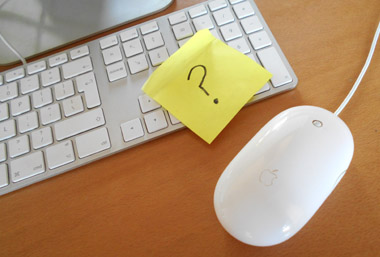We make use of a wide range of UX research methods and tailor our approach in a bespoke manner to best meet your project’s needs.
Ethnographic research
For technology-based products and services to flourish, people need to absorb them into their daily lives. new experience uses ethnographic research techniques to observe people in their natural surroundings.
We typically spend several hours with each user on their home ground, gathering stories about relevant experiences in their daily lives. We may accompany people on their shopping trips, observe them at home or work, ask them to keep online diaries or interview them at home or in public places.
Alongside this careful observation, we ask questions that build a rich understanding of the world through your customers' eyes. Our ethnographic research has helped clients understand:
• Customer types - how customers' needs differ according to attitudes and behaviours
• Likes and dislikes - customers' favourite aspects and frustrations with current services.
• Gaps and opportunities - where current behaviours reveal unmet needs
• Novel services - how customers would use a service that’s unlike anything else on the market.
• Fit with lifestyle - whether or not such a new service would fit in with each customer's daily life.
Our analysis picks up patterns in customers' needs, gaps in provision and opportunities for products of the future.
We may create experience models, opportunity maps and personas to help clients understand the implications and innovate based on our findings.
Participatory design
Running participatory design sessions can help ensure new products and services meet your customers' underlying needs.
We design the sessions to tap into your users' experiences and what drives them, and to help evaluate and develop design concepts for your product or service.
During each 2-3 hour session:
• Groups of about 6-8 people comment on and contribute to the evolving concept.
• We explain the concept and describe scenarios of use.
• We may give participants big sheets of paper and coloured pens, and then ask them to adapt the concept and scenarios of use to their own lives and experiences.
We don't expect users to come up with the ideal concept but their ideas and sketches reveal underlying needs and preferences for you to build on.
Usability testing
Ensuring your products and services are intuitive and a joy to use can increase sales and customer satisfaction while preventing launch delays and costs of handling queries.
New experience has tested the usability of devices, apps and websites across sectors as diverse as smart heating controls, TV remote controls, games consoles, boiler interfaces, apps for financial services, TV, account management, telehealth, and websites for retail, travel, education and news.
Most testing involves giving users key tasks to complete on your product or a touch-screen device, to identify any potential barriers to achieving their goals.
We can run testing in person and remotely, on prototypes or live products and services.
Service trials
In a trial, people use your product or service in the context of their daily lives for a set period, and feed back how it went using tools like online diaries, voice to text and video blogs. new experience has set up user trials to test people’s experiences with products and services including smart heating controls, games consoles, telehealth apps, and android phones.
Service trials take a little longer than pure usability testing but in return you gain real-world feedback. A service trial could be your best option if you want to know:
• how exactly people will use your service in their everyday lives
• what aspects of design may impede this use
• what really works well for people
• what is missing from your users' perspective
• how much people would pay for such a service.

